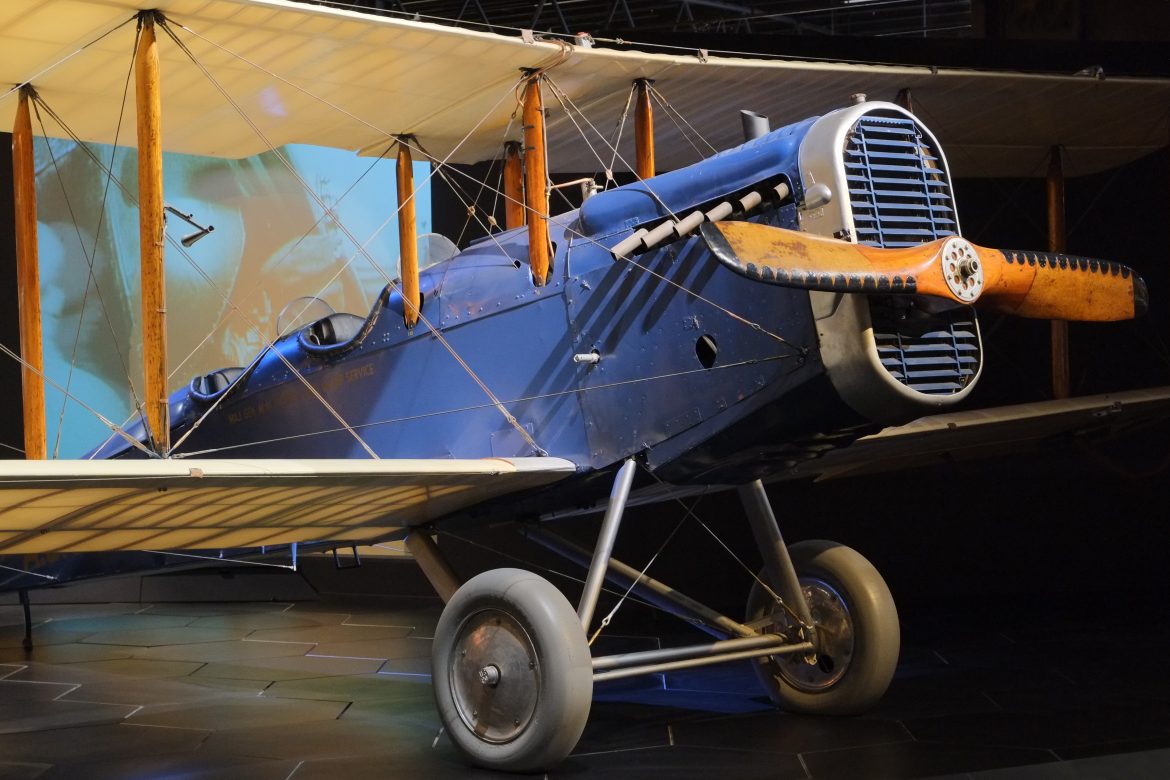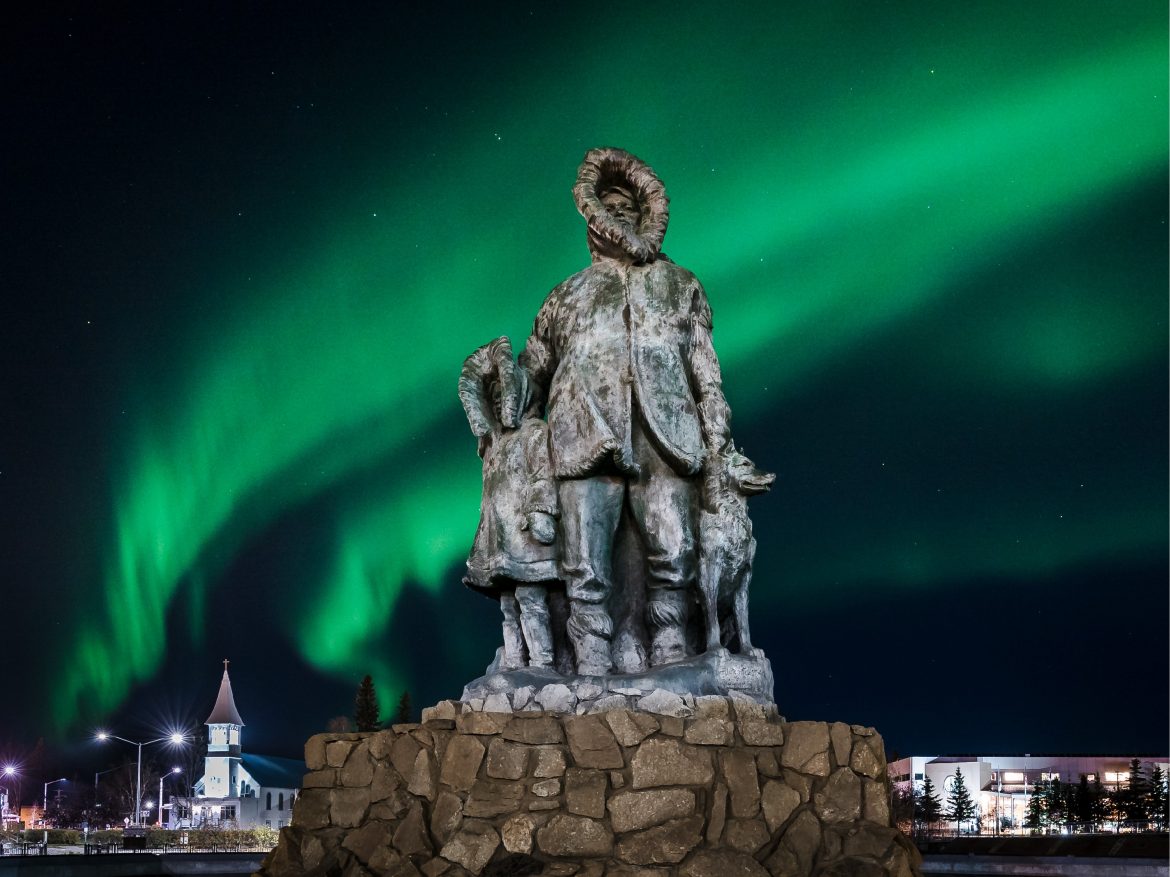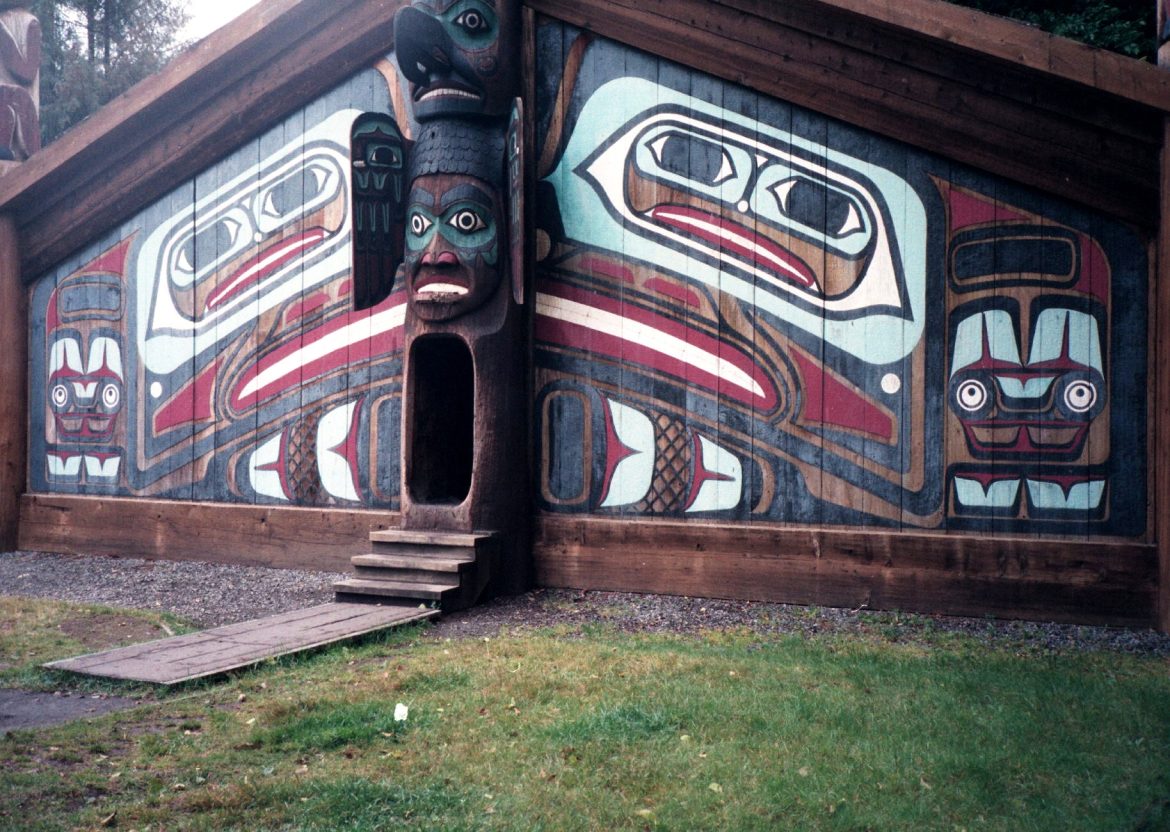Eielson’s epic mail flight On February 21, 1924, Carl Ben Eielson flew Alaska’s first official air mail service. The 280-mile flight from Fairbanks to McGrath took just a few hours, compared to 18 days or more by dog sled. Eielson used a de Havilland DH-4 open cockpit biplane to carry the 164 pounds of mail, and he bundled up in caribou-fur socks, moccasins, a reindeer parka, a marten-skin cap, a wolverine-skin hood, and multiple wool layers, as well as goggles. Born in North Dakota in 1897, Eielson flew in the U.S. Army Air Service during World War I. In 1922, he took a teaching job in Fairbanks but soon devoted his time to flying bush planes for miners and their cargo, quickly becoming one of Alaska’s most pioneering bush pilots. He died in 1929 while trying to rescue a ship full of furs that was mired in ice off the…
A map and guide to best viewing sites The nonprofit Explore Fairbanks has published an Aurora Viewing Map & Guide to nine of the best spots in the area for viewing the northern lights. Places range from Creamer’s Field Migratory Waterfowl Refuge just a couple of miles from downtown to farther-out locations such as Denali National Park or the community of Coldfoot, which are several hours away by car. A few locations are within a 30-minute drive, and all are well known for their excellent aurora viewing. The guide includes some basic aurora science, pro tips for photographers, and a QR code for accessing real time aurora predictions. Its centerfold map is designed to help visitors easily find the best views. Fairbanks’ aurora season stretches from August 21 to April 21. Several companies offer guided tours to see and photograph the lights. The guide is available for free at the…
Backcounty Ski Racer Embraces the North Shalane Frost has won pretty much every ultra-distance ski race in Alaska. In March alone this year, she cleaned up in the Homer Epic 100k, the Chena River to Ridge 50-miler, and the 45-mile Tanana River Challenge, closing out the month by defending her title in the White Mountains 100. The 100-mile ski, bike, and footrace is held in the White Mountains National Recreation Area outside Fairbanks, a one-million-acre wilderness whose fairly modest exterior disguises sweeping valleys, jagged limestone mountains, and clear-running creeks, all tied together by groomed trails and 14 public use cabins. In her last two years in the race, Frost has finished first among skiers (women and men) and set a women’s course record at 12 hours 42 minutes. While she won’t deny being ultra-competitive, she says the real draw of racing in Alaska is getting outside, seeing new country, and—every…
Big federal parks are a draw for many, but state parks are often local favorites. Alaska has over three million acres of state parks, more than any other state. Its 156 parks stretch from north of Fairbanks to Kodiak to the islands of the southeast panhandle. Some are small, like the 40-acre Halibut Point Recreation Area along Sitka’s road system. Others are sprawling, like the 1.6-million-acre Wood-Tikchik State Park north of Dillingham, which with its clear-water lakes and soaring mountains is the largest state park in the country. Opportunities vary across the state park system. They include full RV hook-ups at the parks along the Alaska Highway between Fairbanks and Tok, or the remote wilderness of the 500,000-acre Chugach State Park outside of Anchorage, where you might see more moose than people. Some parks, like Totem Bight in Ketchikan, are set aside for historical purposes. Others, like the Alaska Chilkat…
Museum of the North will use Bus 142 to tell Broader Story of Alaskan Lands The Museum of the North in Fairbanks has received $500,000 to preserve the bus made famous in the book Into the Wild. The funding comes from the National Park Service and the Institute of Museum and Library Services and will help prepare the bus for public exhibit. Angela Lin, senior collections manager at the museum, acknowledges that the bus can be polarizing in Alaska and says that the exhibit will address more than Into the Wild. “We’re excited to tell a more complete story,” says Lin. Bus 142 is a 1946 International Harvester that served as a school bus, a Fairbanks transit bus, and eventually as remote housing for mine workers near the end of the Stampede Trail west of Healy. When its axle broke, the bus was abandoned on site. The bus gained global…
Borealis Basecamp launches new offerings Three nights deep in the backcountry of the million-acre White Mountains National Recreation Area outside Fairbanks is a good example of a hard adventure. A soft adventure, says Adriel Butler, could be one hour riding a snowmachine through a powder field. Butler is the owner of Borealis Basecamp, which he aims to make the go-to resort in interior Alaska for those types of soft adventures. Borealis Basecamp opened in 2017 on a 100-acre parcel of forest 25 miles north of Fairbanks. It was open only during winter months and primarily a destination for aurora viewing. The team used time during the early months of the pandemic to plan new accommodations and adventures that launched in 2022. The basecamp is now open through the summer months and offers excursions like six-hour UTV rides and guided driving trips north of the Arctic Circle. In November, the resort…
A uniquely Alaskan footrace “I’m done with that forever!” I shouted into the sunlit yellow birch and aspen forest. After descending the fabled, steep chute section at mile 17 of the Equinox Marathon in Fairbanks, I felt elated and needed to announce my accomplishment to the trees. At that point in the race, runners were spread out along the 26.2-mile course. Under a miraculously blue autumnal sky, the sparsely populated route felt serene. Gaining 3,200-plus feet of elevation, the Equinox is one of the most difficult races in the world. But you wouldn’t know it from local runners. Fairbanks competitors are extraordinarily humble, yet hardy people. I am not one of those people. I count myself lucky to run a mile. I’d refused several alcoholic beverages along the route from encouraging volunteers at homemade aid stations nearing the top of Ester Dome. “Need a beer?” someone asked as I jogged…
Bobby Sheldon built a car from scraps in 1905 while he was living in Skagway, it was the first car in Alaska and is still on display.
Glenn and Joe Taylor, the brothers behind Taylor’s Gold-n-Stones in Fairbanks, are lifelong treasure hunters.
Jenny Tse of Sipping Streams started the first tea farm in Alaska in 2021 by growing the plants in greenhouses at Chena Hot Springs.











